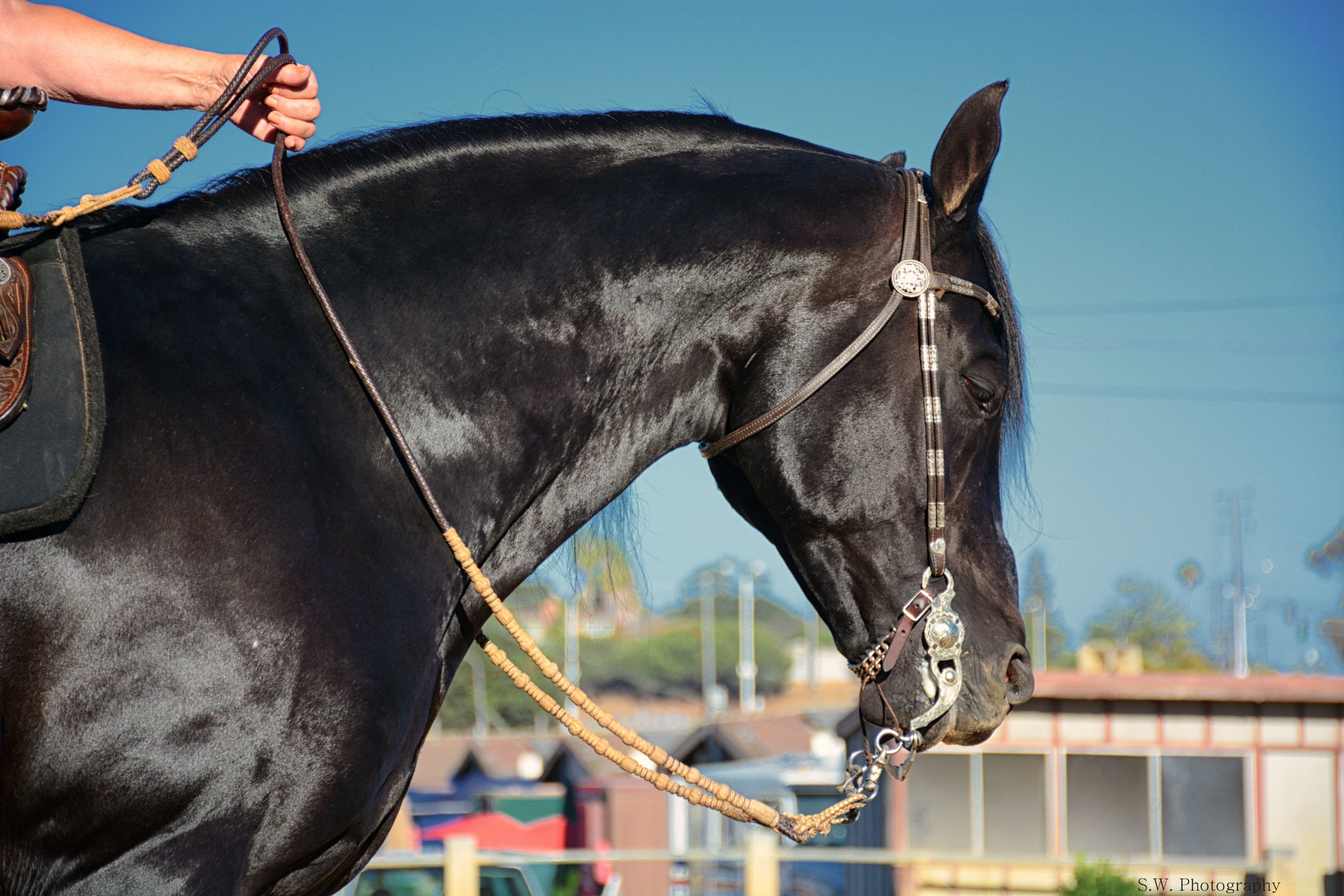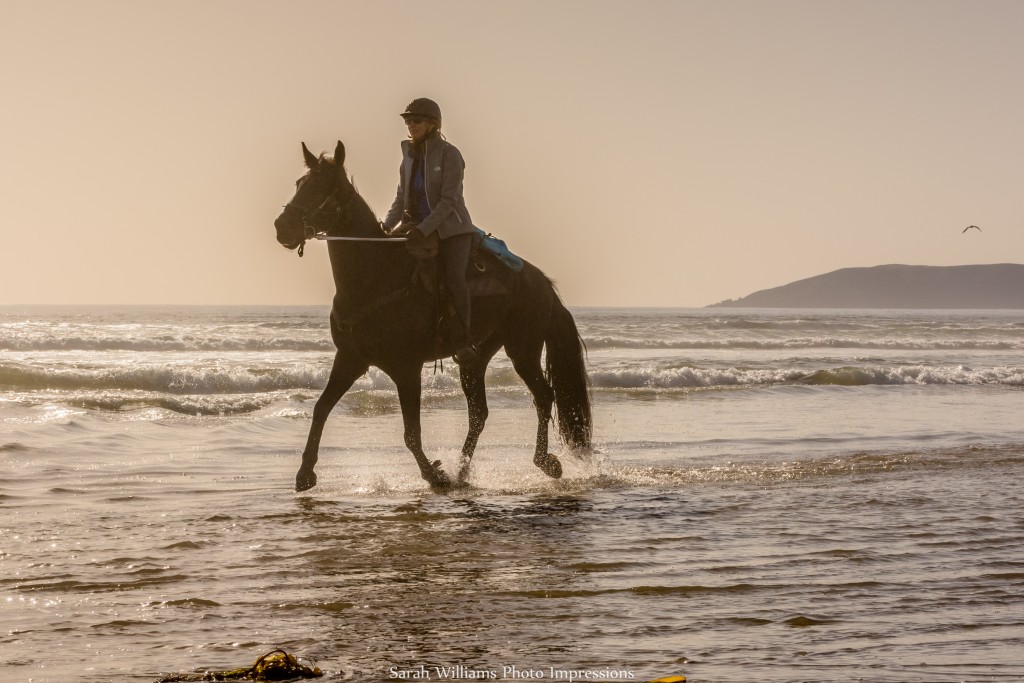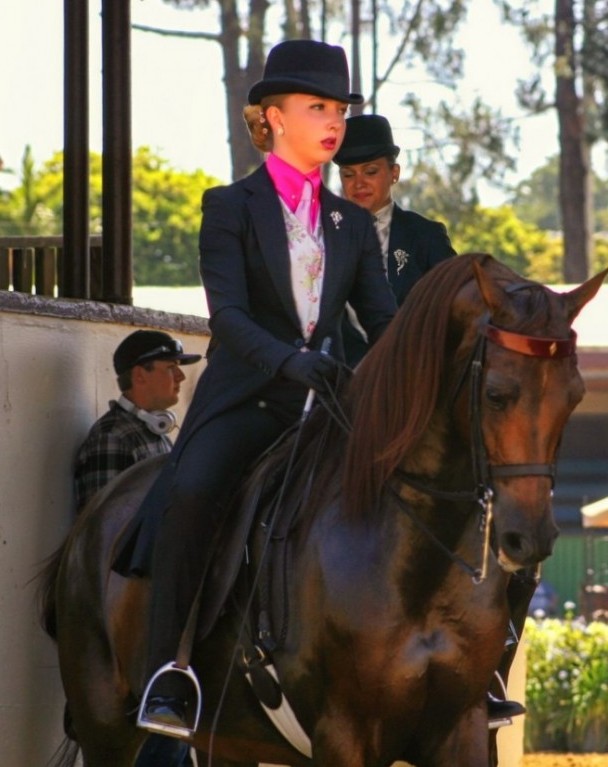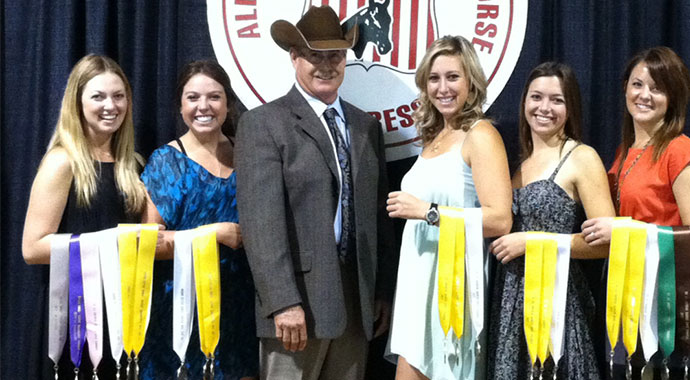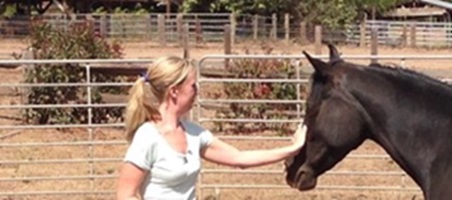Recently, I was at the rare cocktail party with my non-horsey husband and a group of his coworkers. Being a jeans and baseball cap horse girl, I was out of my element, but I put on my social face and interacted as one does at these functions. It wasn’t long before I was engaged in a conversation with a gentleman about horses (this happens to me where ever I go, it seems – you can take the girl out of the barn, but not the barn out of the girl). He and I conversed about our mutual love of horses; he was an avid trail rider, and I told him about my love of competition. Things were going smoothly until we got on the subject of what is “natural” and “unnatural” when it comes to horses.
First, let’s backtrack a bit and look at where exactly the “horse” came from. About 50 million years ago, a three toed, arched-back, dog-like animal existed, that researchers later named “Eohippus” or “the dawn horse”. These were herd animals, existing in the typical group hierarchy seen in many species. They grazed, moved constantly, had a “flight” instinct, and were extremely social in their own circles. This little animal is believed to be the first link in the evolutionary chain that has led us to the equines that we know and love today. This little animal evolved with the world, and eventually, the modern horse was born. Those three toes became a central “hoof” and two vestigial bumps that us horse owners have all cursed at from time to time; the arched back gave way to something more smooth and fitting of a saddle, and they grew in stature. The horse carried man across the world, helped him conquer battles, helped him expand his horizons, and in turn, more horses were born and bred; different horses for different purposes. It is believed by many scholars that the horse, more than any other animal on earth, had the most to do with shaping modern civilization.
It is believed by many scholars that the horse, more than any other animal on earth, had the most to do with shaping modern civilization.
So, back to the cocktail party. There I am, discussing my love for the horse and reining, when this gentleman begins to tell me how “unnatural” it is to “use” a horse for competition purposes. “They don’t like it,” he said. “You shave off their hair, make them wear fancy gear, and hold their heads in unnatural positions. You keep them in specific gaits, make them live in barns, wear blankets, stay clean all the time; it doesn’t seem natural.”
Everyone has an opinion, right? And I do agree that in many cases, us “show people” can go a little too far when it comes to our horses, but so does everyone else. I countered with the argument that it is a little short sighted to assume that what the “trail rider” does is more natural than the competitor. Trail riders often keep their horses in stalls, or if they are in pastures, they aren’t hundreds of rolling acres, their horses wear saddles and bridles and are ushered into horse trailers to be carted around to those beautiful spots that their owners like to ride. They aren’t allowed to meander along a trail, trotting, galloping or bucking at will, they are expected to behave in a safe and sane manner for the comfort of their rider. They have their hooves trimmed, their teeth floated, get their yearly shots, and I have seen more than one “trail horse” who doesn’t appear to “like his job”. So, who has the right answer? If only horses could talk…
When “natural horsemanship” broke onto the scene some years back, it really wasn’t anything new, just a condensed version of a certain way to interact with the horse. Techniques presented as cutting edge, could be traced back hundreds of years to things that the Spanish Conquistadors, Bedouins, or American Indians were doing with their horses. Sadly, an entire group of people found themselves attempting to figure out, not what is best for themselves and their personal horses, but what is best for all people and all horses. I have come across many people like the gentleman I mentioned above who give me the evil eye when I body shave my mare in January and break out her slinky hood and blanket, but just because they choose to adopt a different method does not mean that they are right or more “natural” than I am.
Just because they choose to adopt a different method does not mean that they are right or more ‘natural.’
So, let’s take a quick and hard look at the situation. The only way for a horse to exist completely “naturally” would be for him to be “set free” on a vast tract of land somewhere and be left to his own devices. This means no riding, no special feeds, no vet care, no wound care…nothing. Sure, many would die, many would live; that is the meaning of evolution. Because this is not something that any of us who love our horses and our interactions with them really want, the best that we can do is make our own horses as comfortable in their individual environments as possible. To me, this means that when I do choose to body clip my horse, I make her comfortable by keeping her warm and clean with the proper blankets. Because she lives in a stall, I make sure she always has good feed and supplement support, a run to move around in, and sufficient turn out time. Because she is a working horse, I make sure that her tack fits comfortably and I only ask of her what I know that she is capable of; if I notice a problem or discomfort, I address it swiftly. For me, this is natural.
Just as it is not right for any group of people to say that their way of life, religion, etc., is “right” for everyone, it is also not right for people to make decisions as to what is “right” for every horse. The horse has long been a working animal; we as humans get pleasure out of working with them. There are times when every horse, natural horsemanship trained, trail ridden, show ridden, halter exhibited, etc., will be put in an uncomfortable position, but isn’t that the way of the world for us all…I wasn’t necessarily comfortable at that cocktail party, but I managed to get through it okay.
In closing out this article, I would just like to say that my intention is to shed light on the fact that what is important is not creating the most “natural” environment possible for your horse, rather it is creating the most comfortable, safe and happy environment suited to your needs as a rider and your horse’s needs to accommodate you and perform his job. English, western, rodeo, gymkhana, halter, driving, jumping, vaulting, trail riding, endurance – the list could go on forever – each of these disciplines has its own set of rules and requirements, and that is absolutely fabulous, because that is diversity; that is what turned that little three toed creature of the forest into the most influential animal in human history, and that is what will continue to make the horse, in my opinion, the most amazing animal in the world.
Diversity… that is what will continue to make the horse, in my opinion, the most amazing animal in the world.
Story by Sarah Williams
Photos by Sarah Williams Photo Impressions

